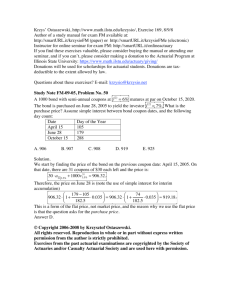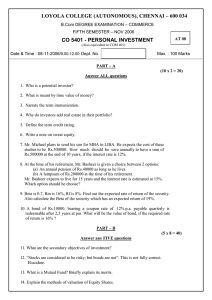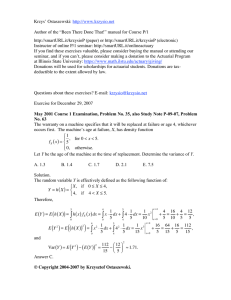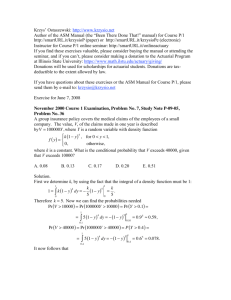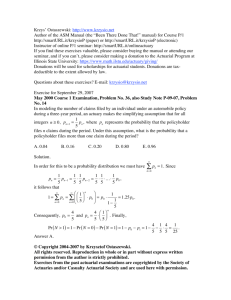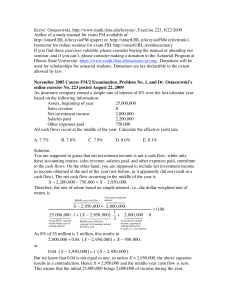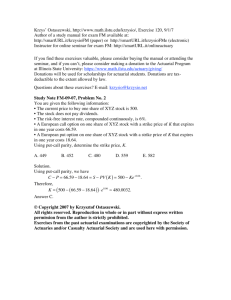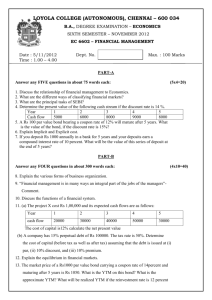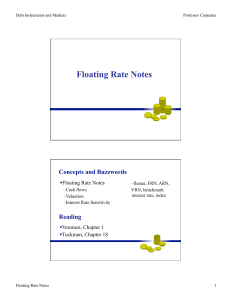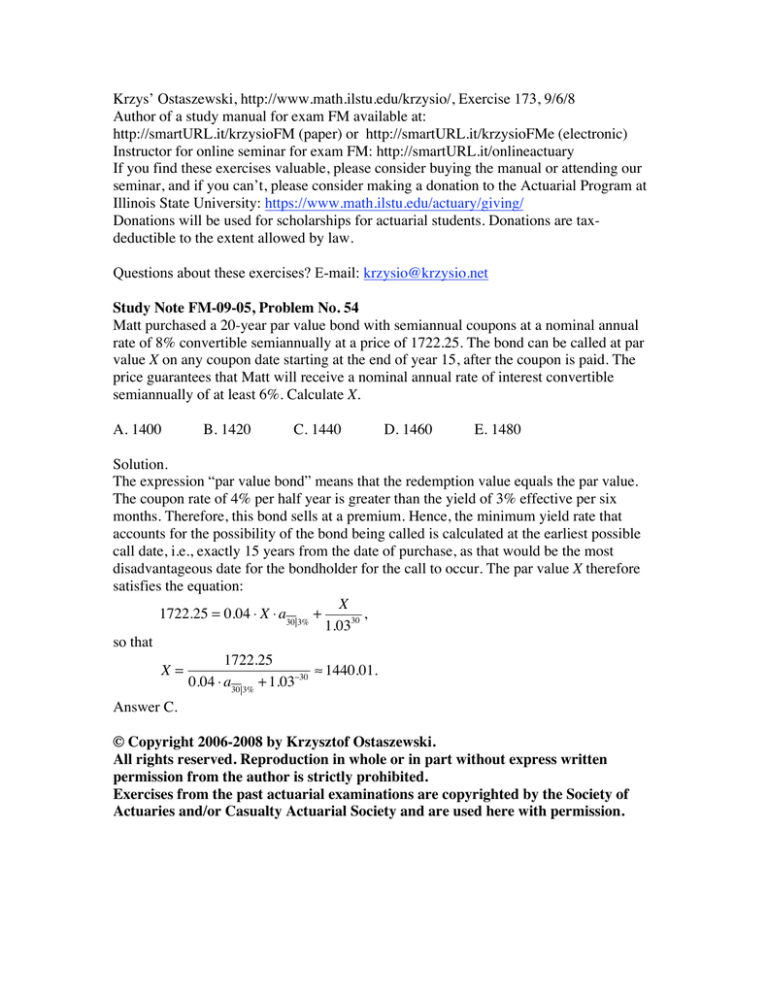
Krzys’ Ostaszewski, http://www.math.ilstu.edu/krzysio/, Exercise 173, 9/6/8
Author of a study manual for exam FM available at:
http://smartURL.it/krzysioFM (paper) or http://smartURL.it/krzysioFMe (electronic)
Instructor for online seminar for exam FM: http://smartURL.it/onlineactuary
If you find these exercises valuable, please consider buying the manual or attending our
seminar, and if you can’t, please consider making a donation to the Actuarial Program at
Illinois State University: https://www.math.ilstu.edu/actuary/giving/
Donations will be used for scholarships for actuarial students. Donations are taxdeductible to the extent allowed by law.
Questions about these exercises? E-mail: krzysio@krzysio.net
Study Note FM-09-05, Problem No. 54
Matt purchased a 20-year par value bond with semiannual coupons at a nominal annual
rate of 8% convertible semiannually at a price of 1722.25. The bond can be called at par
value X on any coupon date starting at the end of year 15, after the coupon is paid. The
price guarantees that Matt will receive a nominal annual rate of interest convertible
semiannually of at least 6%. Calculate X.
A. 1400
B. 1420
C. 1440
D. 1460
E. 1480
Solution.
The expression “par value bond” means that the redemption value equals the par value.
The coupon rate of 4% per half year is greater than the yield of 3% effective per six
months. Therefore, this bond sells at a premium. Hence, the minimum yield rate that
accounts for the possibility of the bond being called is calculated at the earliest possible
call date, i.e., exactly 15 years from the date of purchase, as that would be the most
disadvantageous date for the bondholder for the call to occur. The par value X therefore
satisfies the equation:
X
1722.25 = 0.04 ⋅ X ⋅ a30 3% +
,
1.0330
so that
1722.25
X=
≈ 1440.01.
0.04 ⋅ a30 3% + 1.03−30
Answer C.
© Copyright 2006-2008 by Krzysztof Ostaszewski.
All rights reserved. Reproduction in whole or in part without express written
permission from the author is strictly prohibited.
Exercises from the past actuarial examinations are copyrighted by the Society of
Actuaries and/or Casualty Actuarial Society and are used here with permission.

